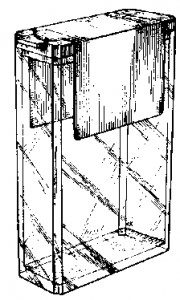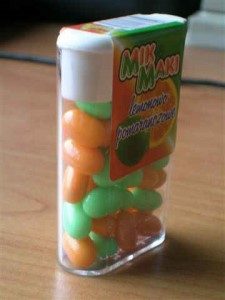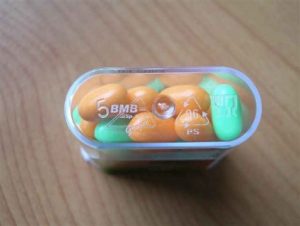The three-dimensional trademark, filed for sweets and consisting of an empty and unlabeled TIC TAC box, although considered as a weak trademark, is opposable to a Community design consisting of a full candy box, bearing figurative and verbal elements.
First of all, an earlier trademark right can be opposed to a later registered Community design (RCD) as:
- Part of the prior art, to destroy the novelty or individual character of the RCD, if the RCD does not produce on the informed user an overall impression that differs from that produced by the earlier mark (see our article here);
- A right being infringed by the RCD, if there exists a likelihood of confusion created by visual, phonetic and/or conceptual similarities between the signs at stake, as in the present case, where a three-dimensional trademark was opposed to the following RCD:
 |
  |
| Mark TIC TAC | Design MIK MAKI |
The Cancellation Division of the European Union Intellectual Property Office (EUIPO) granted the application for a declaration of invalidity considering that, on account of the similarity of the signs and the identity of the goods, there was a likelihood of confusion on the part of the relevant public.
The Board of Appeal of the EUIPO dismissed the appeal of the RCD’s owner. Although the distinctive character per se of the earlier international registration was ‘below average’, since it ‘shows a standard container which can be filled with different products, such as sweets’, the high visual similarity of the signs at issue, which are not offset by phonetic and conceptual differences, and the fact that the goods in question have at least a high degree of similarity, create a likelihood of confusion on the part of the relevant public.
Claiming that the Board of Appeal failed to have regard to the label, the logo MIK MAKI and the very clear curvature of the edges of the contested design while assessing the likelihood of confusion between the containers, the RCD’s owner appealed this decision before the General Court.
On the 3rd of October of 2017, the Court dismissed the appeal (BMB sp. z o.o v/ EUIPO and Ferrero SpA):
“The earlier international registration and the contested design both consist of transparent boxes for sweets. The graphical representation of the earlier international registration, namely a thin rectangular box with an opaque lid and a label ‘straddling’ the box from front to back, is included in the contested design. The appearance of the white lid of each box is also similar.”
“Contrary to the applicant’s claim, the Board of Appeal did not fail to have regard to the word elements of the contested design and, on the contrary, included them in its assessment. However, given the absence of word elements in the international registration, it rightly held in paragraph 29 of the contested decision that no phonetic comparison of the signs could be carried out.”
The Court held that there was a likelihood of confusion between the signs.
An appeal has been lodged before the Court of Justice.
For now, let us keep in mind that if it is difficult to record a three-dimensional mark (see our article here), such a registration affords significant protection.
© [INSCRIPTA]


